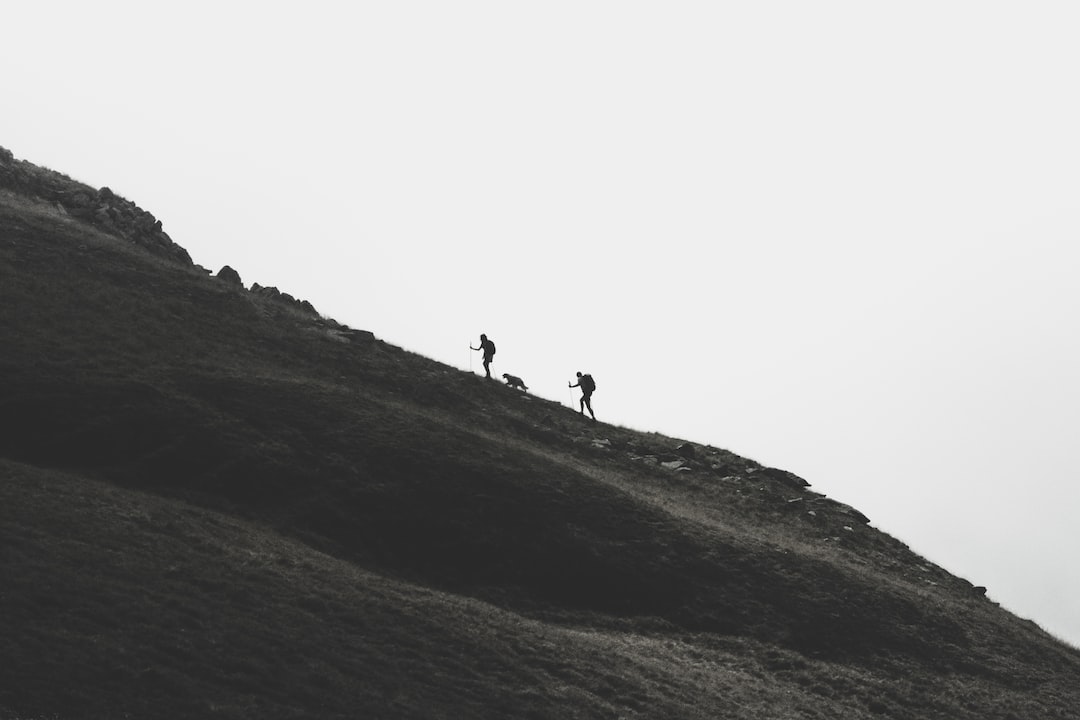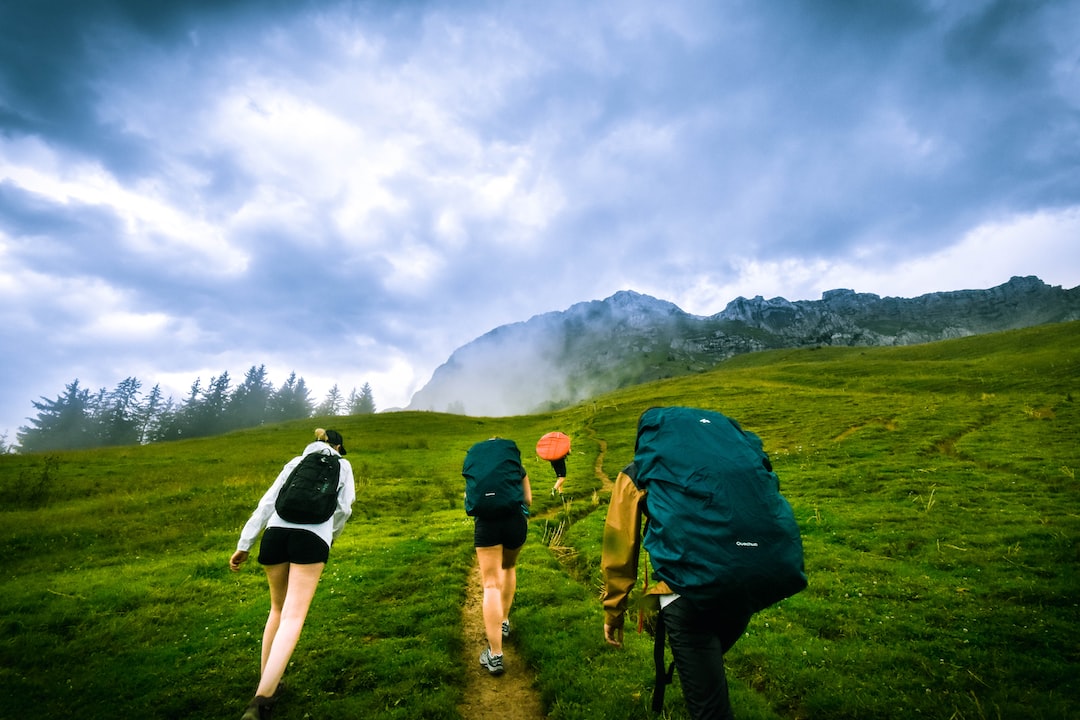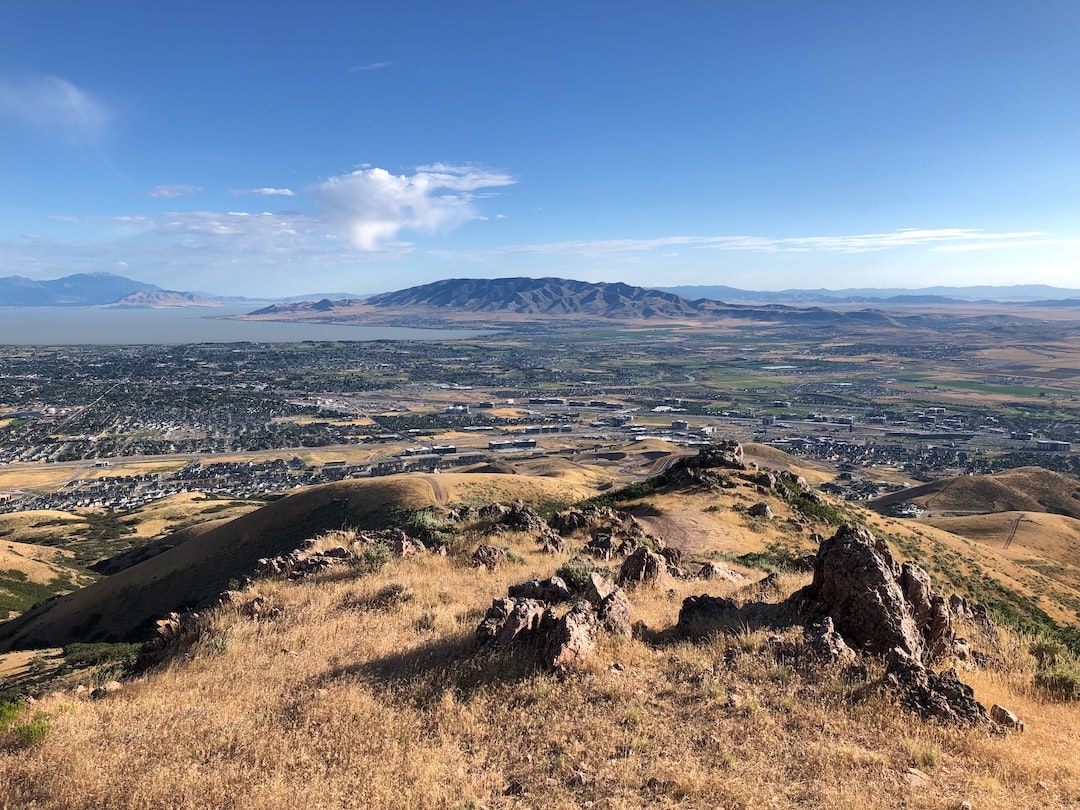Tackling elevation while hiking can be both physically and mentally challenging, even for experienced hikers. When faced with an uphill climb, comfort and stamina can feel like a distant memory. However, with the right techniques, gear, and mindset, you can transform your uphill hiking experience, making it far more achievable and enjoyable. Improved hiking form and fitness will not only benefit uphill hikes, but enhance your overall trail experiences as well.
Improve uphill hiking by mastering posture, practicing effective breathing, and finding a comfortable pace. Lean slightly forward, engage core muscles, and maintain a short stride with toes pointing uphill. Breathe deeply and rhythmically using your diaphragm. Stay consistent with your pace, and take regular breaks to reduce muscle fatigue and improve endurance.
Why is uphill hiking so challenging?
In order to become a better uphill hiker, it’s useful to understand why climbing upwards can be so demanding. Hill climbing requires much more energy expenditure than hiking on flat terrain or even downhill. This is due to a combination of factors, including:
- Increased workload: When hiking uphill, the major muscle groups in your body are forced to work harder to overcome gravity and carry your weight up the incline.
- Steep gradients: The steeper the incline, the more your body has to exert itself in order to overcome the hill’s gradient.
- Reduced oxygen: As you gain altitude, the air becomes thinner and contains less oxygen, compromising your ability to breathe efficiently and deliver oxygen to your muscles.
- Mental challenges: Facing an uphill climb can be intimidating, and the psychological aspect can negatively affect your performance if not addressed.
Are there inherent physical differences between individuals that affect uphill hiking performance?
Beyond the common challenges of uphill hiking, it’s worth considering that physical differences between people can have a significant impact on their uphill hiking abilities.
In my experience, factors such as leg length, muscle composition, lung capacity, and overall cardiovascular fitness can all profoundly influence your performance uphill. So, it’s essential not to evaluate your progress solely based on others’ abilities.
How to Improve Your Uphill Hiking Technique
Your uphill hiking technique can be substantially improved by focusing on several key areas:
- Posture: Keeping an upright posture with a slight forward lean will not only help you maintain balance but also recruit the correct muscles during your climb.
- Breathing: Focus on deep, rhythmic breaths – this will provide adequate oxygen to working muscles and can help prevent the onset of early fatigue.
- Step length: Reducing your step length by taking shorter steps can ease the strain on your muscles and lead to increased efficiency.
- Weight distribution: Distribute your body weight evenly on your feet, avoiding excessive strain on your toes or heels.
- Using trekking poles: Integrating trekking poles into your hiking routine can provide extra support, stability, and take some of the strain off your legs.
By focusing on these key areas, you can optimize your uphill hiking efficiency and ensure a more enjoyable experience.
What are some exercises that can improve uphill hiking performance?
Incorporating regular exercises into your routine that target the muscles and cardiovascular systems required for uphill hiking can help you overcome challenging inclines with greater ease. Some of these exercises include:
- Stair climbing: Climbing flights of stairs, whether indoors or outdoors, provides a functional and accessible way to increase your uphill hiking capabilities.
- Incline walking or running: Treadmill training with an incline setting, or outdoor trails with steep gradients, can help improve leg strength and cardiovascular endurance specific to uphill hiking.
- Squats and lunges: These lower body exercises help strengthen the legs and core, providing a solid foundation for uphill trekking.
- Kettlebell swings: Swinging a kettlebell can help develop hip, back, and core muscles, which contribute to a more efficient hiking posture and better weight distribution.
- Core strengthening: A strong core is essential for stability, balance, and muscular support during uphill hiking. Exercises such as planks, Russian twists, and seated leg lifts target this muscle group.
Through consistent and specific training focused on these exercises, you’ll see significant improvements in your ability to hike uphill more comfortably and efficiently.
How to choose the right gear for uphill hiking
Choosing appropriate gear can make a considerable difference in your overall uphill hiking experience. Keep the following factors in mind when selecting your equipment:
- Footwear:Select hiking shoes or boots that provide adequate support, stability, and grip on a variety of surfaces.
- Socks:Opt for socks that offer moisture-wicking properties and cushioning for added comfort.
- Layering:Choose moisture-wicking fabric as a base layer, a heat retaining layer for insulation, and a waterproof, breathable layer for protection against the elements.
- Trekking poles: Invest in a quality pair of adjustable, lightweight trekking poles. They can significantly improve stability, weight distribution and reduce pressure on your knees and lower back.
- Hydration: Always carry an adequate amount of water with you on your hike to stay hydrated and maintain your performance levels.
Adapting your gear to your individual needs will make your uphill hiking experience safer, more comfortable, and ultimately more enjoyable.
Does mental preparation play a role?
Understanding the Importance of Mental Preparation
Mental preparation plays a crucial role in uphill hiking. A key aspect of mental preparation is setting realistic expectations and understanding that uphill hiking is a challenge. However, with the right mindset, determination, and persistence, you can gradually improve your uphill hiking capabilities.
Strategies for Mental Preparation
Here are some strategies to help you mentally prepare for uphill hiking:
- Set attainable goals: Avoid setting your sights too high initially. Start with smaller inclines and gradually progress to steeper hills as your ability and confidence grow.
- Visualize success: Engage in positive visualization exercises, imagining yourself successfully navigating the uphill terrain. This can help to boost your confidence and reduce anxiety prior to your hike.
- Develop a growth mindset: Embrace the challenge of uphill hiking as an opportunity for personal growth and self-improvement. Accept that it may be difficult at first, but with hard work and persistence, you will get better over time.
- Stay present: Focus on the current task at hand, rather than worrying about what lies ahead. Concentrate on your breathing, body form, and the way your legs are moving, and relish in the act of conquering the hill.
- Find a hiking buddy: Sharing the uphill hiking experience with a friend, family member or joining a hiking group can offer camaraderie, motivation, accountability, and a sense of healthy competition.
Embrace the Process and Celebrate Your Progress

As you embark on your uphill hiking journey, it’s essential to embrace the process, be patient, and consistently work on improvement. As noted earlier, don’t compare your progress to others – everyone’s physiological makeup, fitness levels, and experience are unique.
Track your own progress over time by recording the hikes you undertake, documenting their distances, elevations, and durations. Celebrate your growth, no matter how small or incremental – from shaving time off your ascent to conquering steeper inclines. Enjoy the satisfaction of knowing that with each uphill trek, you’re becoming a stronger, more efficient, and more accomplished hiker.
Takeaways for Uphill Hiking Success
To recap, improving your uphill hiking ability requires a combination of strong technique, specific physical and mental conditioning, appropriate gear selection, and mental preparation. Focus on:
- Optimizing your uphill hiking technique, including posture, breathing, and step length.
- Reinforcing your physical capabilities through targeted exercises that strengthen muscles and improve cardiovascular endurance.
- Selecting the appropriate gear, including footwear, clothing, and trekking poles, to suit your individual needs and the terrain.
- Mentally preparing with visualization exercises, goal-setting, mindfulness, and a growth mindset.
- Embracing the journey and celebrating your progress as you grow and develop as an uphill hiker.
By keeping these pointers in mind, and continually honing your uphill hiking skillset, you will soon find yourself tackling uphill trails with greater ease, stamina, and enjoyment.
Benefits of Uphill Hiking
Now that we have covered the essential techniques, training, gear, and mental preparation required for uphill hiking, let’s take a moment to appreciate the numerous benefits that come from challenging yourself on uphill terrain. Uphill hiking offers:
- Increased cardiovascular fitness: As an aerobic exercise, uphill hiking can significantly improve your heart and lung health, increase oxygen delivery to your muscles, and enhance overall stamina.
- Muscle strength and endurance: Uphill hiking demands more from your leg and core muscles compared to flat terrain, resulting in stronger and more durable muscles over time.
- Weight management: The increased energy expenditure required for uphill hiking can help contribute to maintaining a healthy weight and improving overall body composition.
- Mental health benefits: Challenging yourself on uphill trails can lead to a greater sense of accomplishment, self-esteem, and stress relief, all of which contribute to improved mental well-being.
- Exposure to nature: Hiking uphill allows you to explore and connect with the natural world, offering opportunities for personal reflection, inspiration, and a greater appreciation for the environment.
With a clear understanding of the benefits uphill hiking offers, it becomes even more motivating to improve your skills and reap the rewards that come with it.

Dealing with Altitude and Acclimatization
While improving your stamina and uphill hiking abilities, you may also be venturing into higher altitudes where the air is thinner and contains less oxygen. Proper acclimatization is crucial for staying safe and performing well at altitude. Here are some tips for dealing with higher elevation hikes:
- Gradual ascent: Take your time when increasing altitude by progressively hiking to higher levels over days or weeks to help your body adjust to the thinner air.
- Hydration: Staying well-hydrated is essential when hiking at high altitudes, as dehydration can exacerbate the effects of altitude sickness.
- Pacing: Adopt a slower, more steady pace during high altitude hikes, allowing your body sufficient time to adjust while minimizing unnecessary exertion.
- Recognize the symptoms: Be aware of altitude sickness symptoms such as headaches, dizziness, nausea, and shortness of breath. If these symptoms persist, reassess your situation and consider descending to a lower elevation if necessary.
- Consult a healthcare provider: Before embarking on any high altitude hiking adventure, consult with a healthcare professional to discuss potential risks and necessary preparations for a successful and safe experience.
Adapting Uphill Hiking Strategies for Different Terrains
Not all uphill hikes are created equal; variations in steepness, vegetation, rockiness, and trail quality can all affect the strategy and techniques you use. When faced with varying terrains, consider these adaptive strategies:
- Rocky inclines: When ascending rocky terrain, ensure solid footing on stable rocks or boulders. Trekking poles can provide additional stability and support, and proper footwear will ensure better grip on uneven surfaces.
- Wet or muddy trails: Wet or muddy trails can be slippery and challenging to navigate. Maintain a steady, cautious pace, engage your core for stability, and utilize trekking poles to reduce the risk of slipping.
- Sandy inclines: Hiking on sand requires a slightly different approach as sand tends to shift underfoot. Wider steps, a lower body position, and reliance on trekking poles can help you maintain traction and stability.
- Snow or ice: For snowy or icy uphill hikes, appropriate gear like crampons, ice axes, or microspikes may be necessary. Stay vigilant for potential hidden hazards and use proper techniques to stay safe and maintain your balance.
Being adaptable and acquiring the necessary additional skills to navigate different terrains will ensure you’re well-equipped for any uphill hiking challenge that comes your way.





